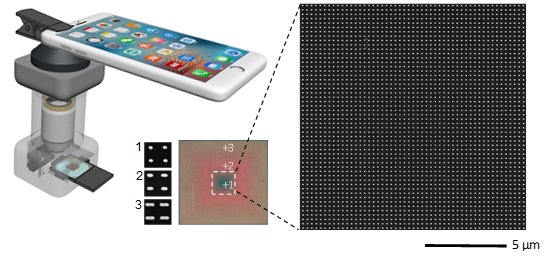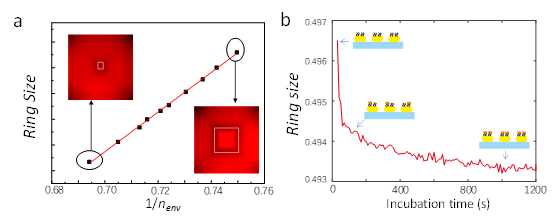Today, with the rapid development and popularization, smartphones have become an indispensable part of our daily lives. As a portable tool integrating communication, computing, optical imaging and many other functions, smartphones are promising portable health detection devices that provide fast, convenient and high-quality health services for families or remote areas. In order to achieve this goal, researchers have proposed many solutions, trying to combine micro-nano biochemical sensors based on optics-especially plasmon sensors-with mobile phones. However, since the high-precision data reading of the traditional plasmon sensor depends on the measurement of spectrum or angular spectrum, which requires a more complicated reading device, the miniaturization of the final equipment is confined.
To break the limitation above, the research groups of Prof. Weihua Zhang and Prof. Zhenda Lu at the College of Engineering and Applied Sciences, Nanjing University cooperated to develop a gradient pattern plasmon sensor (Patterned Plasmonic Gradient, PPG) as shown in Figure 1. The sensor can convert the local refractive index information into two-dimensional image information that is the size of the resonance ring to read the data directly using the camera function of smartphones. The experimental results show that the refractive index measurement accuracy of the PPG sensor is better than <0.001RIU, which can detect trace (20 μL, ~10 nM) protein adsorption process in real time (detection limit is ~1 nM) (Figure 2). Related achievements were published in Nanoscale, titled "Patterned plasmonic gradient for high-precision biosensing using smartphone reader" (DOI: 10.1039/C9NR00455F). At the same time, the design of the PPG sensor has obtained the invention patent authorization (201710149279.3).
Dr. Jie Bian is the first author of the article. Prof. Weihua Zhang and Prof. Zhenda Lu are corresponding authors. This study was supported by grants from the National Key Technologies R&D Program of China (No. 2016YFA0201104), the National Basic Research Program of China (No. 2015CB659400), and the National Natural Science Foundation of China (No. 11574142, 11621091, and 21601083).

Figure 1 Optical and electron micrographs of gradient pattern plasmon sensors and schematic diagrams of mobile phone reading devices.

Figure 2 (a) The resonance ring size of the gradient pattern plasmon sensor is proportional to the reciprocal of the refractive index. (b) The specific adsorption experiment of trace protein molecular samples (20 μL, ~10 nM).
(Manuscript by Jie Bian and Weihua Zhang)

